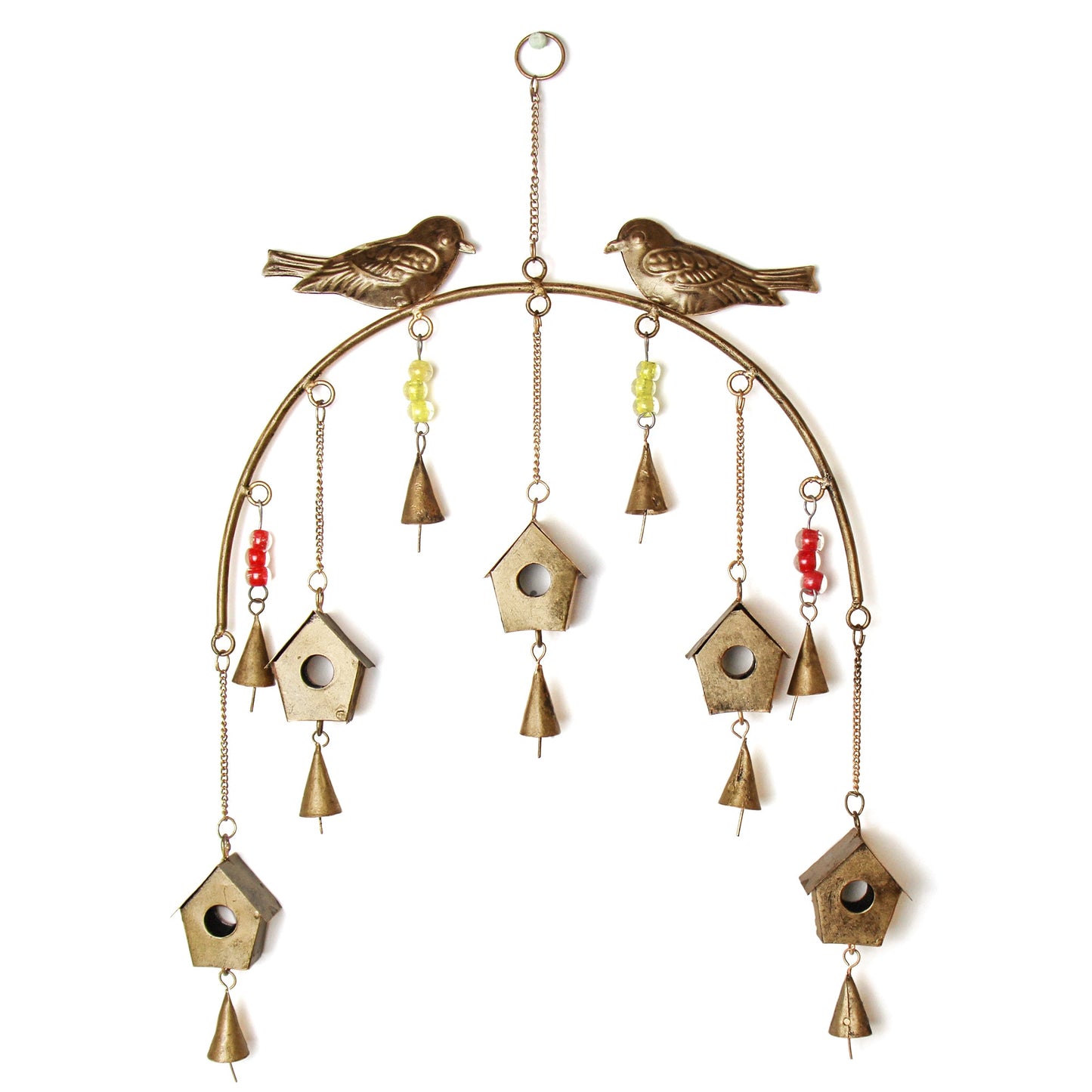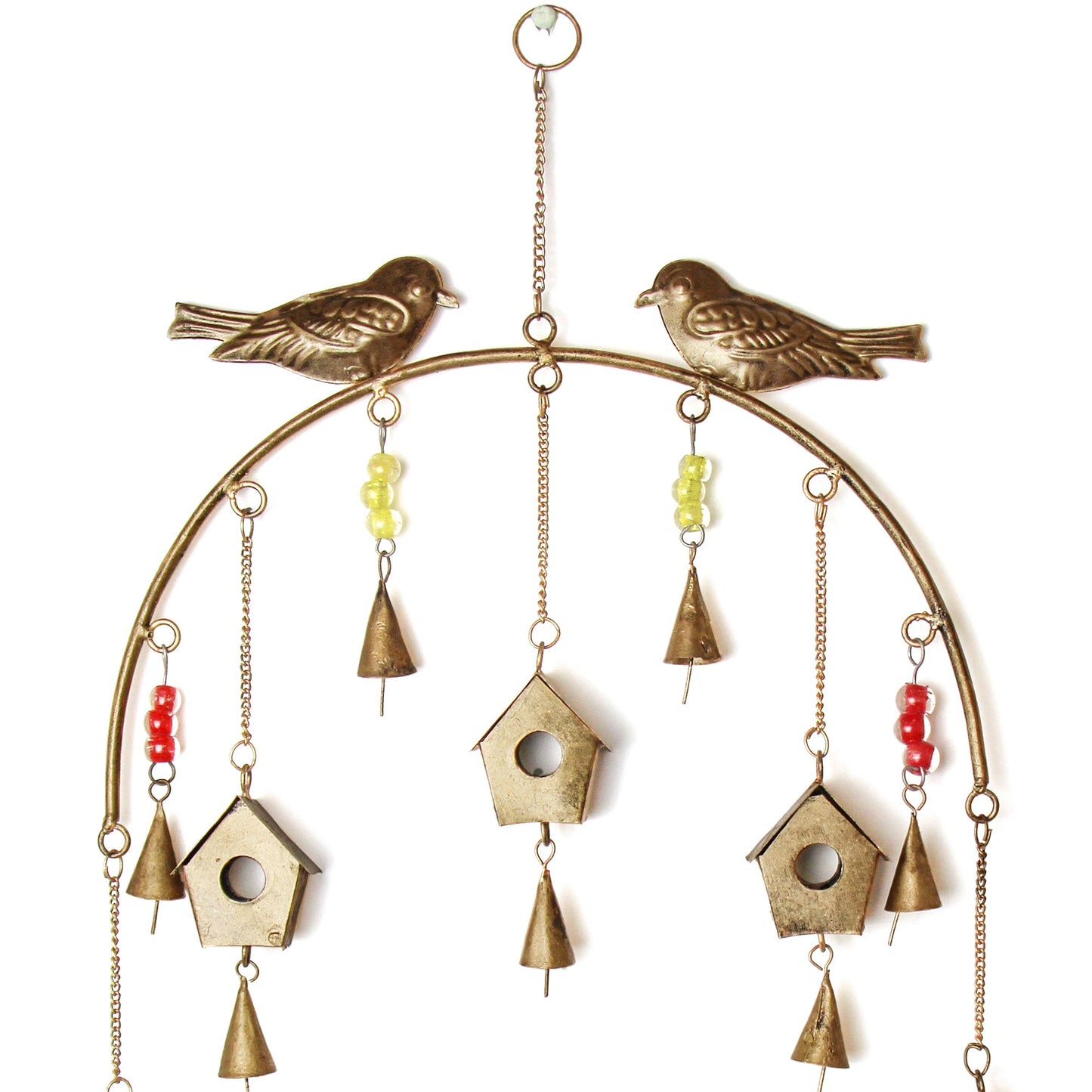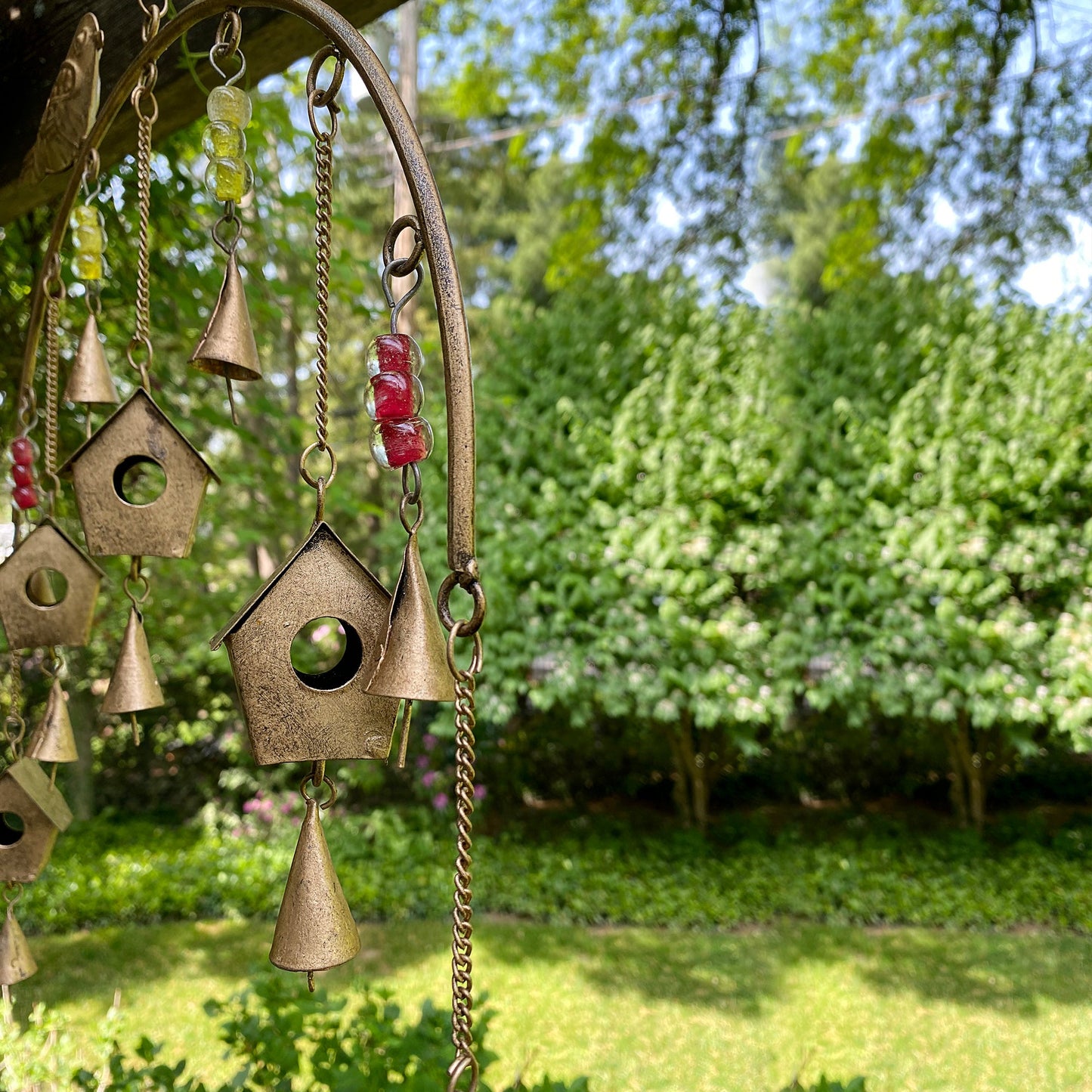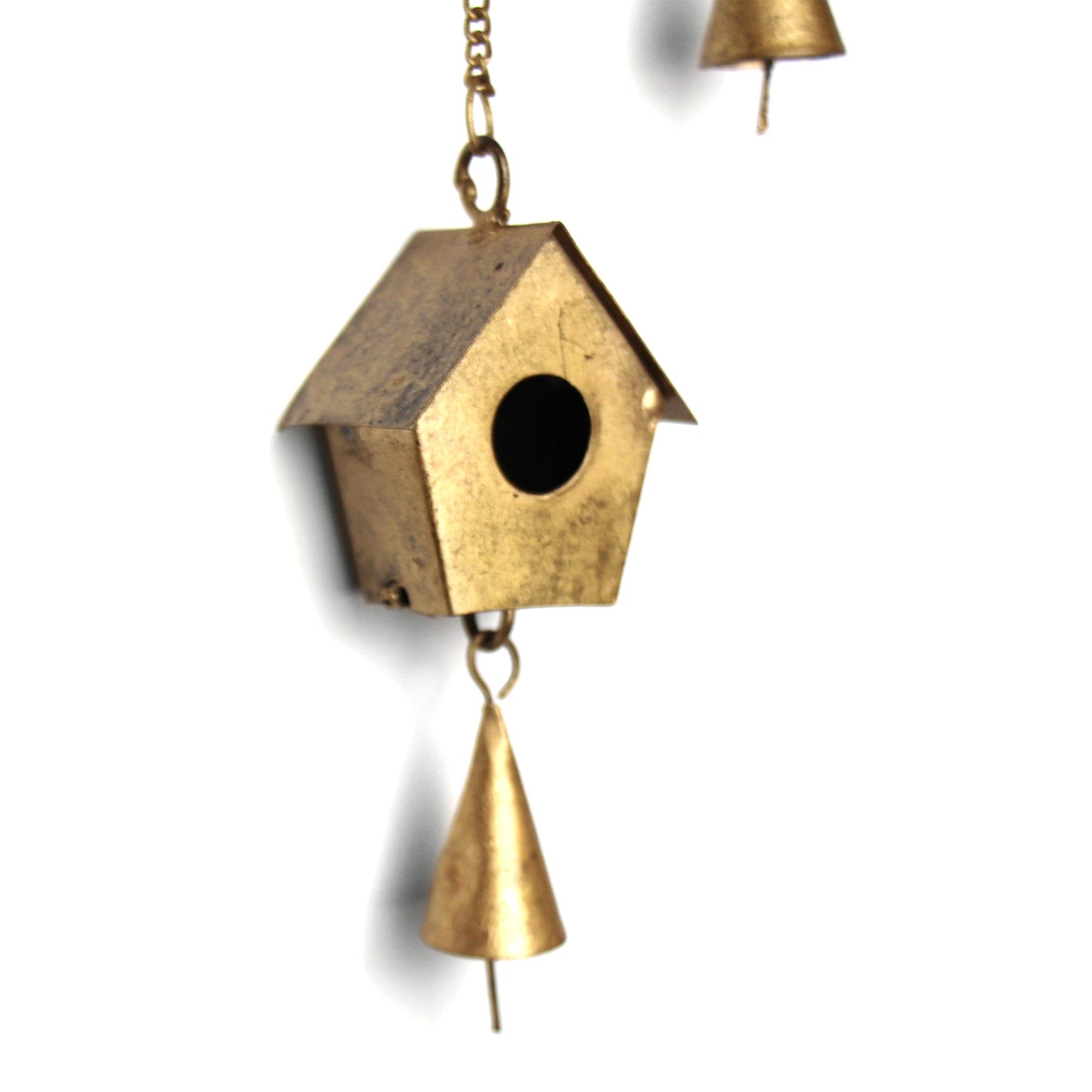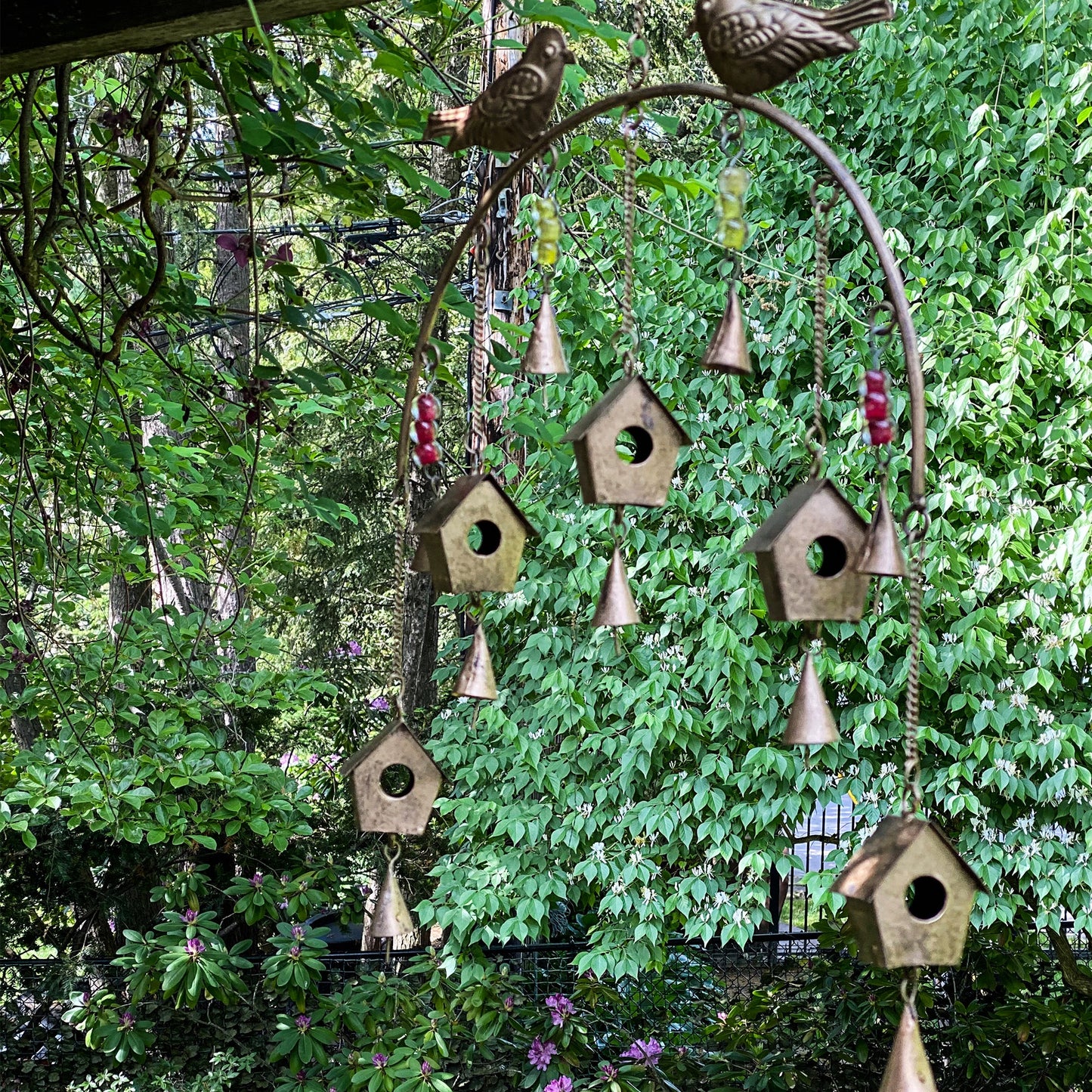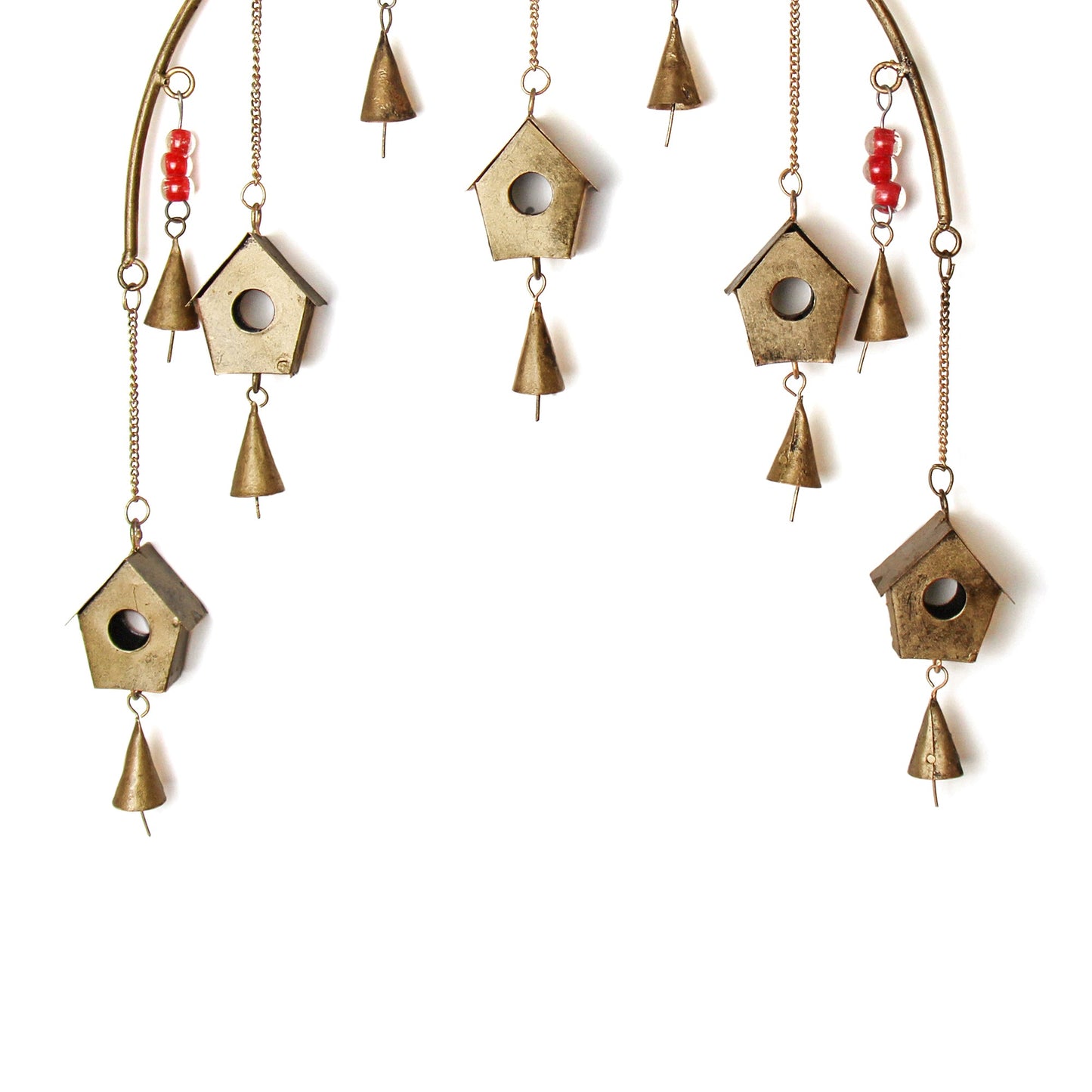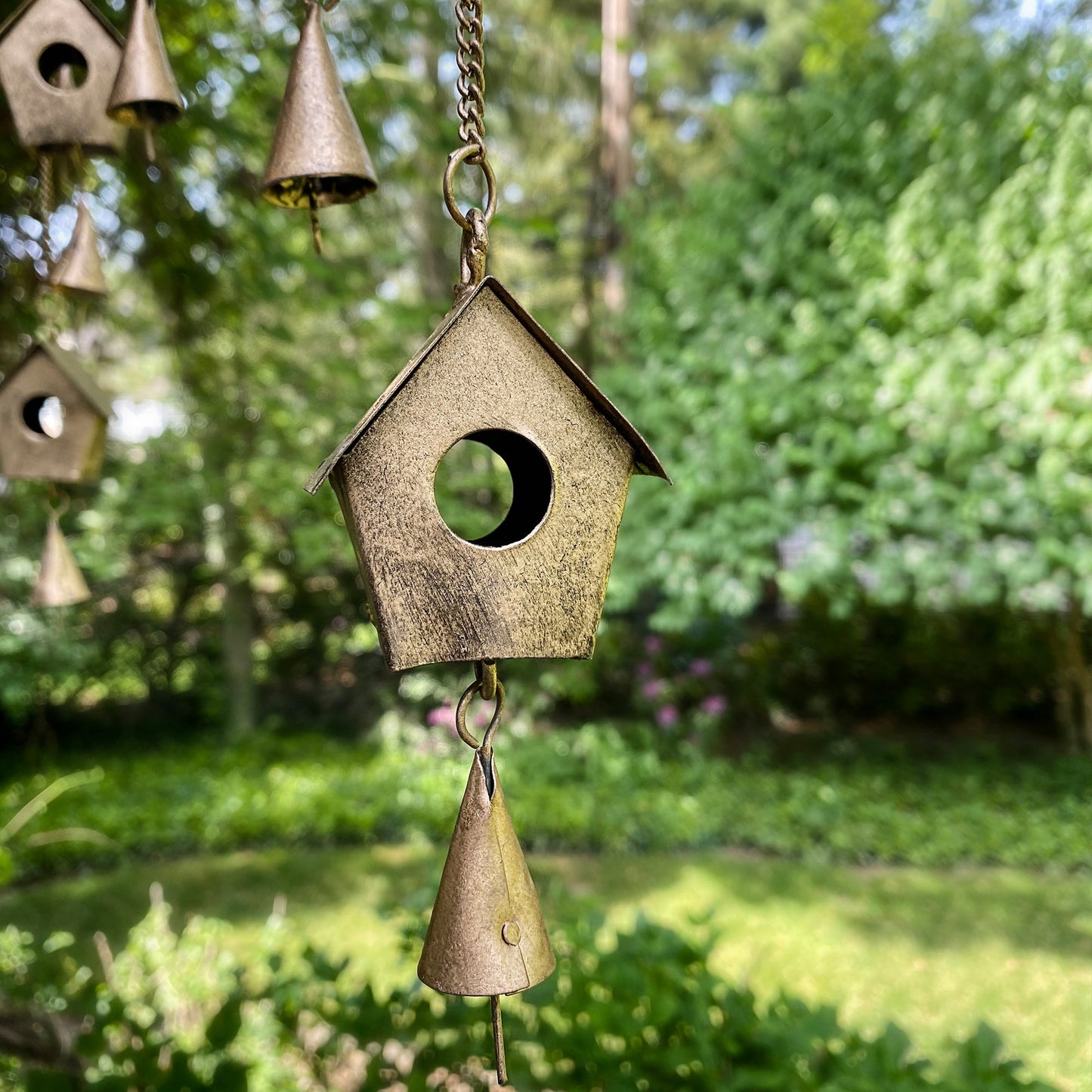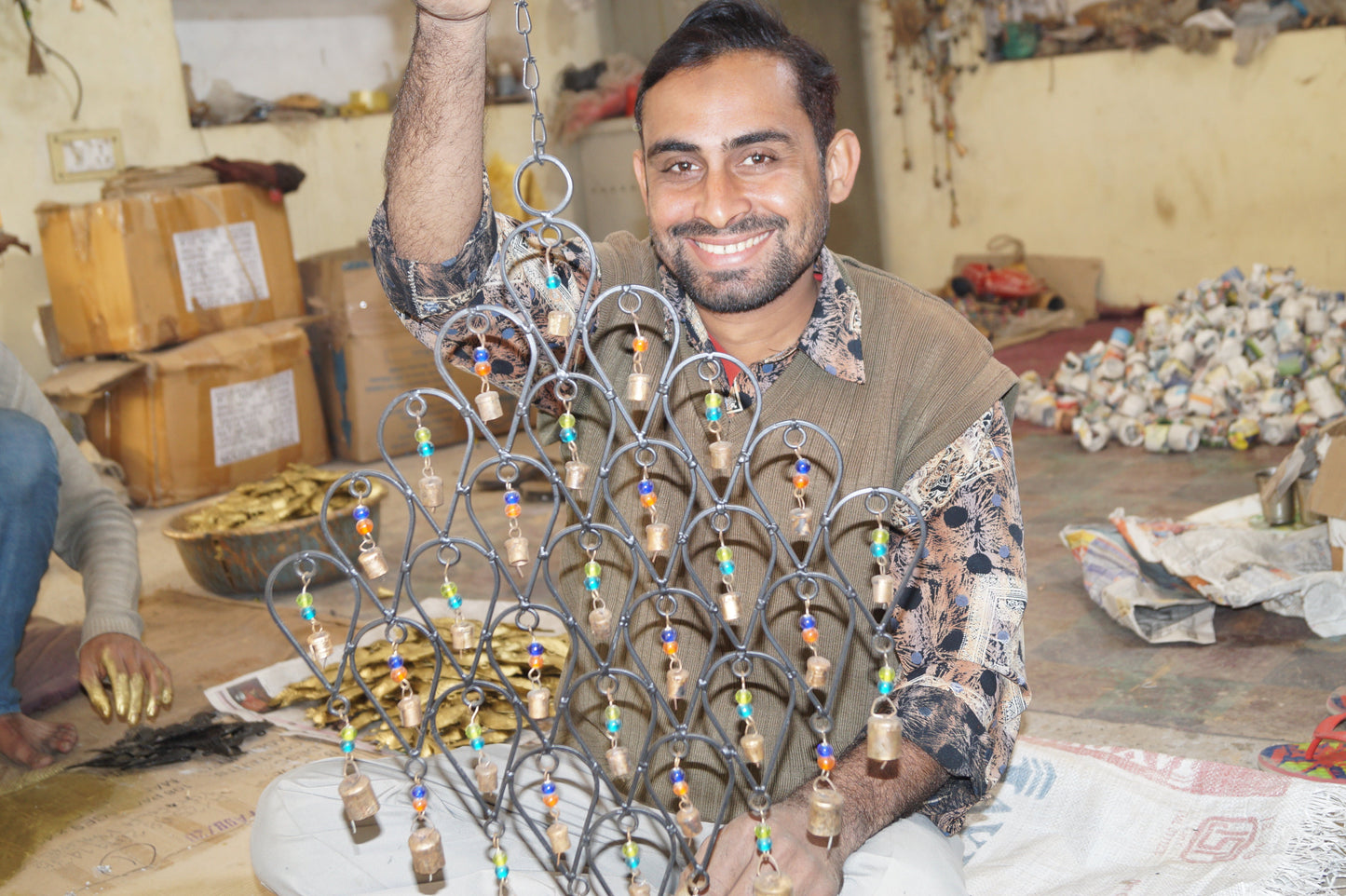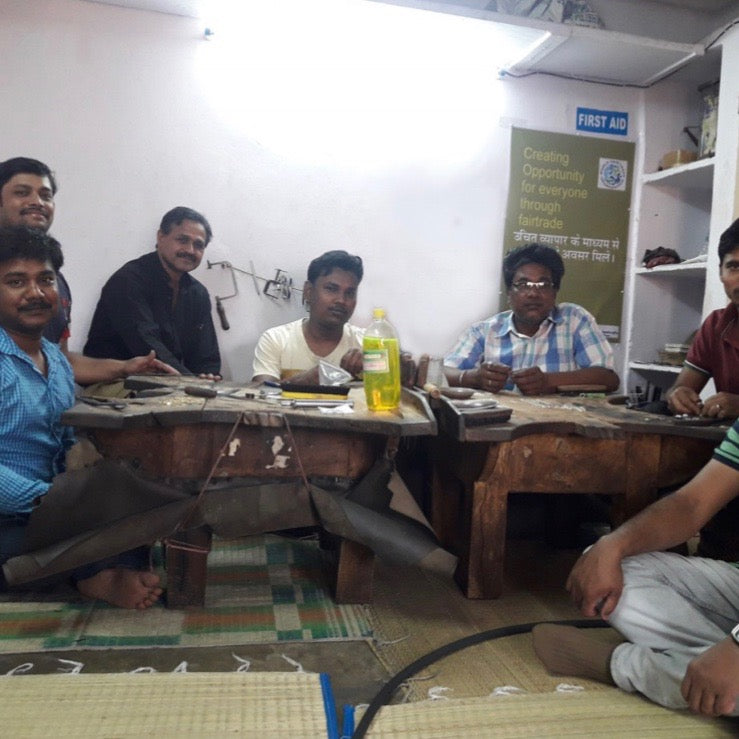Global Crafts
Campana de pájaro hecha a mano, hierro reciclado y cuentas de vidrio - Comercio justo-India
Campana de pájaro hecha a mano, hierro reciclado y cuentas de vidrio - Comercio justo-India
No se pudo cargar la disponibilidad de retiro
El timbre de la pajarera presenta dos pájaros en relieve posados sobre cinco pajareras en miniatura. Las nueve campanas emiten dulces sonidos mientras las pajareras se balancean. Los detalles de cuentas de vidrio añaden brillo. Esta es una obra de arte que se puede utilizar como decoración artística de pared o como timbre de jardín. Hecho a mano por artesanos en un taller familiar en Behat, India, el oficio de trabajar el metal se ha transmitido de generación en generación. El taller se estableció en 1976 y emplea a la familia de artesanos y a artesanos bien capacitados de la zona.
Características del producto:
- Tipo: Arte de pared o timbre de jardín.
- Colores: Latón dorado y cuentas de vidrio multicolor.
- Materiales: Hierro reciclado y vidrio.
- Acabado lacado, sin plomo.
- Dimensiones: Aprox. 22 pulgadas de arriba a abajo y 13,5 pulgadas de ancho.
- Las campanas de cono miden aproximadamente 1,5 pulgadas de alto y poco menos de 1 pulgada en la base.
- Las pajareras miden aproximadamente 2 pulgadas por 2 pulgadas.
- Las cadenas miden aproximadamente 3 pulgadas de largo.
- Bajo techo, en exteriores.
Historia detrás del arte:
El taller compra chapas de chatarra a comerciantes que las recogen puerta a puerta. Pero no dejes que eso te haga dudar de la calidad de sus artesanías; se aseguran de que la chatarra provenga de material aceptable y la transforman en hermosas obras de arte. Los artesanos se especializan en un tipo particular de acabado conocido como “Rasai”. Es entonces cuando se añade una capa de latón al hierro forjado para darle a los productos un aspecto rústico y tosco.
Debido a la naturaleza hecha a mano, pueden ser evidentes ligeras variaciones en tamaño, color, forma, patrón u otras características. Cada pieza es verdaderamente una obra de arte única, elaborada a mano con amor.
Share
About the Artisans
About the Artisans
 Joyeria Semilla meaning Seed Jewelry is a small fair-trade workshop in the Andean town of Villa de Leyva, Colombia. Girasol Taborda, a local artisan and social entrepreneur, started the workshop in the mid-1990s.
Joyeria Semilla meaning Seed Jewelry is a small fair-trade workshop in the Andean town of Villa de Leyva, Colombia. Girasol Taborda, a local artisan and social entrepreneur, started the workshop in the mid-1990s.
Joyeria Semilla’s objective is three-folds; to create new jobs, revive Colombia's handicrafts sector and to motivate locals to better manage their natural resources. The organization works primarily with socially and economically disadvantaged youths, single mothers and people with disabilities in the area. The company offers free training in product design, technical training and marketing to new members. Joyeria Semilla has trained them in the craft of jewelry-making.

Caña Flecha or “Gynerium Sagittatum” is a locally found palm tree in the regions of the Caribbean coast. The leaves from this plant are used for making jewelry, woven hats, bags and baskets. The Zenú Indians were and their descendants inherited the tradition of picking veins of the green palm leaf for weaving. These veins were made into woven hats and other products for their personal use.
The Zenú culture is said to have existed between 200BC to1600AD. With the arrival of the colonizers in the 16th century, the indigenous community declined of unknown reasons. Today a very small population remains that claims the inheritance of the almost extinct Zenú tribe. Known for their skills in the construction of major waterworks, canals and irrigation system along with being skilled goldsmiths, examples of their accomplished craftsmanship are found in various museums around the world. Their larger means of subsistence were hunting, farming, fishing and trading.
Caña Flecha is found in abundance in the region, and hence makes for a sustainable and naturally available raw material for these products. Every bit of the plant is utilized – from using in building walls and roofs in houses to food for cattle and medicinal purposes. It is from the central vein of the leaf that the fibers for weaving are obtained. After the hard surface is peeled off, the fibers are left in the sun to dry and undergo a natural tinting process; these fibers are barely about 1 millimeter in thickness and hence call for a lot of skill and patience to weave with. The dried fibers are then processed for natural coloration - some are boiled with lemon to whiten them and some are treated with mud and boiled with plantain leaves to blacken them. The designs are based on ancient motifs and mathematical representations, which are inspired by the early Zenú culture.
